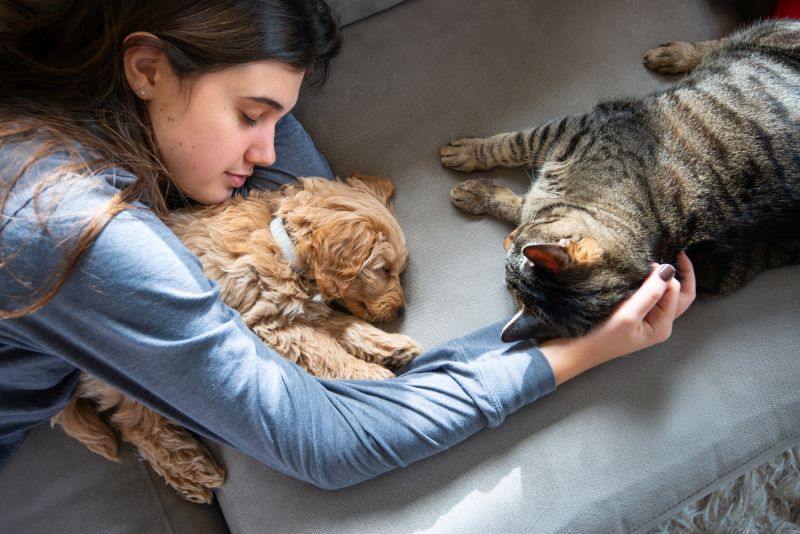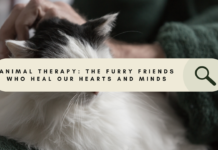Last Updated on June 13, 2024 by Dog Lover
The Power of the Human-Animal Bond: Exploring Animal Therapy

The Human-Animal Bond in Animal-Assisted Therapy
Animal-assisted therapy involves the use of trained animals, typically dogs, to provide emotional support and comfort to individuals in need.
Benefits of the Human-Animal Bond in AAT
Research has consistently shown that the human-animal bond plays a crucial role in the success of AAT. The bond provides several benefits, including:
- Improved Mental Health: The human-animal bond has been linked to improved mental health outcomes, including reduced stress, anxiety, and depression. This is achieved through the emotional support and companionship provided by the animal.
- Enhanced Coping Mechanisms: The bond between humans and animals can help individuals develop effective coping mechanisms, such as routine and structure, which are essential for mental health recovery.
- Increased Social Support: The human-animal bond can also provide social support, which is critical for mental health. This support can come from the animal itself, as well as from the interactions and connections formed with others through the animal.
Here are more of the benefits of animal therapy:
- Reduced stress and anxiety: Studies have shown that interacting with animals can help to lower blood pressure, heart rate, and cortisol levels (the stress hormone). Animals can also provide a sense of comfort and companionship, which can be helpful for people who are feeling lonely or isolated.
- Improved mood: Interacting with animals can boost the release of endorphins, which have mood-elevating effects. Animals can also help to distract people from negative thoughts and feelings.
- Increased social interaction: Animals can be a great way to help people connect with others. Therapy animals can be used to encourage conversation and social interaction, which can be beneficial for people with autism spectrum disorder (ASD) or other social challenges.
- Improved motivation: Animals can provide a sense of purpose and motivation, especially for people who are struggling with depression or other mental health conditions. Caring for an animal can give people a sense of responsibility and accomplishment.
- Enhanced physical therapy: Animals can be used to motivate people to participate in physical therapy exercises. For example, a therapist might use a dog to help a person practice walking or reaching.
Animal therapy can be used in a variety of settings, including hospitals, nursing homes, schools, and mental health facilities. It is important to note that animal therapy is not a replacement for traditional therapy, but it can be a valuable complementary treatment.
Here are some of the different types of animals that can be used in animal therapy:
- Dogs: Dogs are the most common type of animal used in animal therapy. They are often used to help people with anxiety, depression, PTSD, and autism spectrum disorder.
- Cats: Cats can also be helpful for people with anxiety and depression. They can provide a sense of calm and companionship.
- Horses: Equine therapy, or horse therapy, can be helpful for people with physical disabilities, as well as for people with mental health conditions such as PTSD and depression.
- Other animals: Other animals, such as rabbits, guinea pigs, and birds, can also be used in animal therapy. The type of animal that is used will depend on the individual’s needs and preferences.
If you are interested in learning more about animal therapy, you can talk to your doctor or therapist. There are also many organizations that provide animal therapy services.
Conclusion
References
- Rodrigo-Claverol, M., Manuel-Canals, M., Lobato-Rincón, L.L., Rodriguez-Criado, N., Roman-Casenave, M., Musull-Dulcet, E., Rodrigo-Claverol, E., Pifarré, J., & Miró-Bernaus, Y. (2023). Human–Animal Bond Generated in a Brief Animal-Assisted Therapy Intervention in Adolescents with Mental Health Disorders. Animals, 13(3), 358. doi: 10.3390/ani13030358
- Oosthuizen, K., Haase, B., Ravulo, J., Lomax, S., & Ma, G. (n.d.). The Role of Human–Animal Bonds for People Experiencing Crisis Situations. Retrieved from https://www.ncbi.nlm.nih.gov/pmc/articles/PMC10000229/
FAQs
What is the human-animal bond?
The human-animal bond refers to the emotional connection and attachment that forms between humans and animals. This bond can provide emotional support, companionship, and a sense of purpose.
How does the human-animal bond contribute to animal-assisted therapy?
The human-animal bond is a fundamental component of animal-assisted therapy. It allows individuals to form strong emotional connections with their animal companions, which can have a profound impact on mental health outcomes.
What are some benefits of the human-animal bond in animal-assisted therapy?
The human-animal bond in animal-assisted therapy has been linked to improved mental health outcomes, enhanced coping mechanisms, and increased social support.














